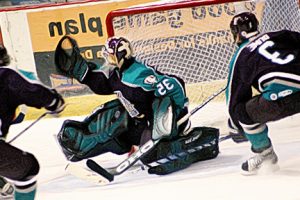 Since dad got remarried last month, I’ve been trying really hard to connect with his partner’s 14 year-old daughter. It’s an uphill battle, which I put down predominantly to her being a teenager of (I’m guessing) the slightly anxious persuasion.
Since dad got remarried last month, I’ve been trying really hard to connect with his partner’s 14 year-old daughter. It’s an uphill battle, which I put down predominantly to her being a teenager of (I’m guessing) the slightly anxious persuasion.
One piece of information I’ve managed to glean about her is that she’s massively into sports… the one thing that I know virtually nothing about. How convenient! Well, I’m taking it as opportunity to learn something new. Hockey and soccer are her two favourites, according to dad, so that narrows down the field a bit, but I’ve got a long way to go before I can say I’m fully conversant on the subject.
To start off, I’ve been educating myself on the subject of goals – as in, the physical structure that a team attempts to get the ball or puck or whatever to go into in order to score. I thought it might be handy to at least be able to identify the difference between hockey and soccer paraphernalia. It seems that hockey goal nets are strung between poles that are smaller and closer together than those in soccer.
I even went down to the local oval and checked out the sporting equipment there. It seems to me that the angled soccer goal nets are among the largest on offer. This got me thinking about how the size of a goal affects the way in which a sport is played in terms of things like strategy and technique.
Maybe this is something I can talk to the surly teen about. Seeing as she plays both sports, as well as watching them fanatically, she probably has some insights into the structural differences between the games. Somewhat surprisingly, I reckon I could become genuinely interested in this, partly because it seems such an endless field of investigation. Perhaps I’m finally starting to understand why people become so obsessed with dissecting and analysing competitive sporting events.